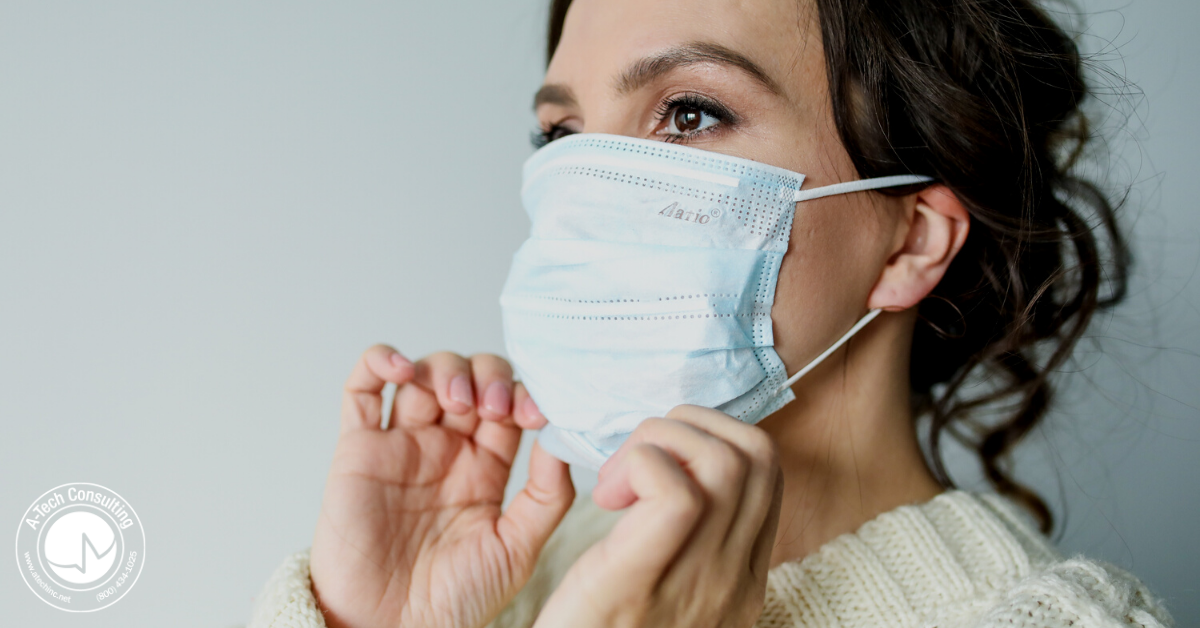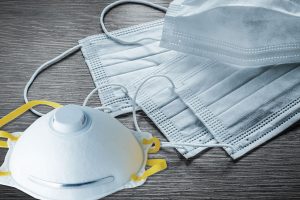
The CDC recently began recommending that everyone wear a mask when going out in public. So how did they come to this conclusion? What is the difference between the different masks on the market? What’s the difference between a mask and a respirator? What mask should I wear? And if this is a good idea, why did they wait so long to make it a recommendation? These are all valid questions, and A-Tech has some answers.
Cloth Mask vs. Surgical Mask vs. N95 Respirator – What’s the Difference?
As a member of the coronavirus family, COVID-19 is a novel (new) coronavirus that the CDC believes spreads from person to person. Though not entirely clear, the virus is expected to be able to spread both through the air, via aerosolized viruses and contact infection, via droplet contamination. It is believed to become airborne from coughing, sneezing, etc., but does not remain airborne, which is why we have been told to obey the 6-foot social distancing criteria. In addition, the CDC has reported cases of individuals infecting others with the virus who do not show symptoms themselves. These people who have the COVID-19 virus and show no symptoms are called asymptomatic.
As an additional preventative measure, the CDC has recently recommended that all individuals wear some type of cloth face covering for protection, when out in public. Unfortunately, due to the strain of medical supplies in recent months, the availability of surgical masks and N95 respirators has been extremely limited.
 What is the difference in protection between cloth masks, surgical masks, and N95 respirators? Much like the surgical mask, the cloth mask is not there to necessarily protect yourself, but to protect others from potential exposure from any virus you may be carrying. The cloth and surgical mask serve as a physical barrier between the face and the ambient environment for droplet and contact protection. One of the best available respirators, if fitted properly, is the N95 respirator, which filters out at least 95% of particulates that are 0.3 microns, when properly worn.
What is the difference in protection between cloth masks, surgical masks, and N95 respirators? Much like the surgical mask, the cloth mask is not there to necessarily protect yourself, but to protect others from potential exposure from any virus you may be carrying. The cloth and surgical mask serve as a physical barrier between the face and the ambient environment for droplet and contact protection. One of the best available respirators, if fitted properly, is the N95 respirator, which filters out at least 95% of particulates that are 0.3 microns, when properly worn.
The main difference between these types of PPE (personal protective equipment) is the loose-fitting nature of masks and the tight-fitting, filtering nature of respirators. Cloth and surgical masks are commonly loose-fitting and N95 respirators are often fitted to your face. Fitted respirators allow for more airborne particles to be filtered out and the aerosolized viruses that are attached to these particles are then filtered out. This significantly decreases the chance of you contracting COVID-19.
Here are some Points to Remember for Safe Mask Use
The biggest thing to remember is the mask only works when you properly wear it, form-fitting at the nose, sealed around the mouth.
Wear your mask when you are going to be in close proximity to other people, like stores, medical offices and popular restaurant take out spots.
Every time you wear it with one string not tied or below your nose, you are not protecting yourself or others properly.
Cloth masks must regularly be washed. Store your masks in a clean bag. Be considerate of others and dispose of your masks (and gloves) in a trash can, not on the ground.
Do not share your mask (I have seen this happen).
Do not adjust your mask/touch your face without first sanitizing your hands.
How Do I Make My Own Mask?
The CDC has step by step instructions about how to make your own mask from materials you can find at home. It is incredibly important to stop the spread of COVID-19 and taking small steps like this go a long way. Remember, even if you aren’t showing symptoms of COVID-19 you still may have the potential to infect others.
A-Tech Consulting is here to help!
In response to the current coronavirus pandemic, A-Tech Consulting now offers COVID-19 environmental services, such as surface testing for Real-Time PCR COVID-19, disinfection scopes of work, PPE training, Respirator Protection Program creation, review and implementation assistance throughout Southern California, including Orange County, Los Angeles, San Diego, Inland Empire, as well as the greater Las Vegas, Nevada areas. Contact us today!


